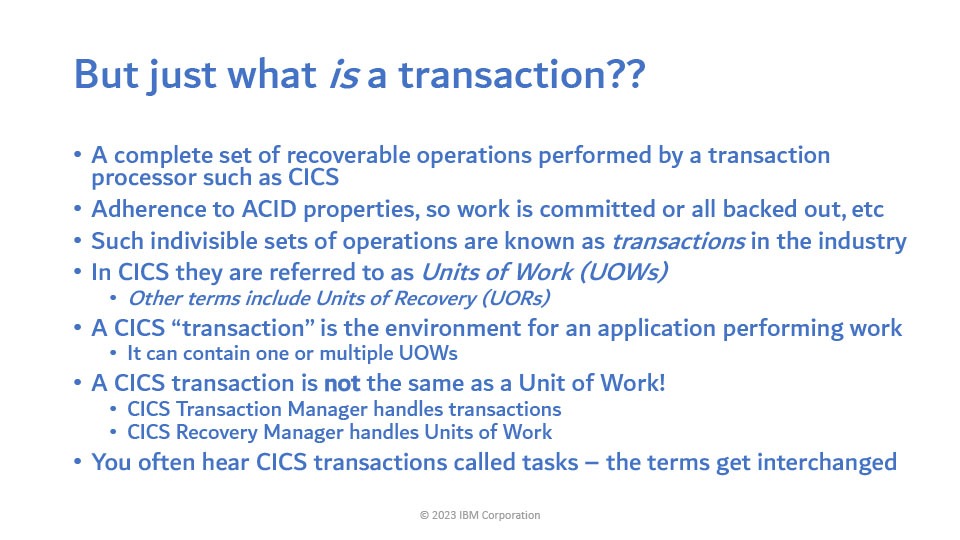Andy Wright, an IBM Senior Software Engineer and Master Inventor with over 35 years of experience, recently shared his profound knowledge in a session at the Virtual CICS User Group meeting on November 14th. His expertise in the CICS (Customer Information Control System) recovery mechanisms and log management is not only backed by his MSc in Software Engineering from the University of Oxford but also by his significant contributions to ITSO Red Books, education classes, and CICS customer health checks.
In the complex world of mainframe computing, understanding the nuances of CICS recovery processes and two-phase commit mechanisms is crucial for maintaining data integrity and system reliability. These processes, which are built on the ACID (Atomicity, Consistency, Isolation, Durability) principles, are the backbone of transaction integrity within CICS. The recovery manager in CICS coordinates the preparation and commitment of recoverable operations, allowing the system to rollback or commit changes as needed.

The two-phase commit mechanism in CICS is a critical process for ensuring all participating systems are prepared before actual commitment. It consists of a preparation phase, where each system confirms its readiness, and a commit phase for the final execution. This process is optimized with strategies like “last agent” and “single updater” to improve efficiency. Additionally, CICS introduces the concept of shunting to manage uncertainties, like communication failures, thereby preserving transaction integrity.
Log management and recovery procedures in CICS regions are equally important. Key pointing, performed at specific intervals, triggers log data housekeeping and influences the system’s ability to manage resources effectively. The z/OS logger subsystem is central to this process, handling log data offloading and physical storage. Understanding the balance in key pointing frequency is key to optimizing system performance. Tuning the z/OS logger, including defining high and low offload percentages, is crucial for efficient log management.
CICS also allows tasks to implicitly or explicitly commit changes using the SYNCPOINT command. This command triggers the two-phase commit process, wherein the system introduces shunting as a safety measure against communication failures or unexpected issues. Furthermore, concepts like implicit forget are employed to enhance coordination in the transaction process.
The management of log data, including the monitoring of DFHRM 205 messages and SMF 88 data, plays a pivotal role. This data informs the frequency of housekeeping activities and helps in fine-tuning the system for optimal performance. The choice between coupling facility (CF) logging and DASD-only logging has significant implications for both primary and secondary storage of log data, impacting recovery processes and system performance.
In conclusion, a deep understanding of CICS recovery, two-phase commit, and log management is vital for professionals in the mainframe industry. By mastering these aspects, organizations can optimize their CICS systems, safeguard critical transaction data, and minimize downtime in the event of a failure, thus driving operational excellence in their CICS environments.
Check out this Virtual User Group Session video and transcript here. Additional resources and the slide deck are here.
Amanda Hendley is the Managing Editor of Planet Mainframe and host of the Virtual Mainframe User Groups. With a career rooted in the technology community, she has held leadership roles at the Technology Association of Georgia, Computer Measurement Group (CMG), and Planet Mainframe. A proud Georgia Tech graduate, Amanda spends her free time renovating homes and volunteering with SEGSPrescue.org in Atlanta, Georgia.




